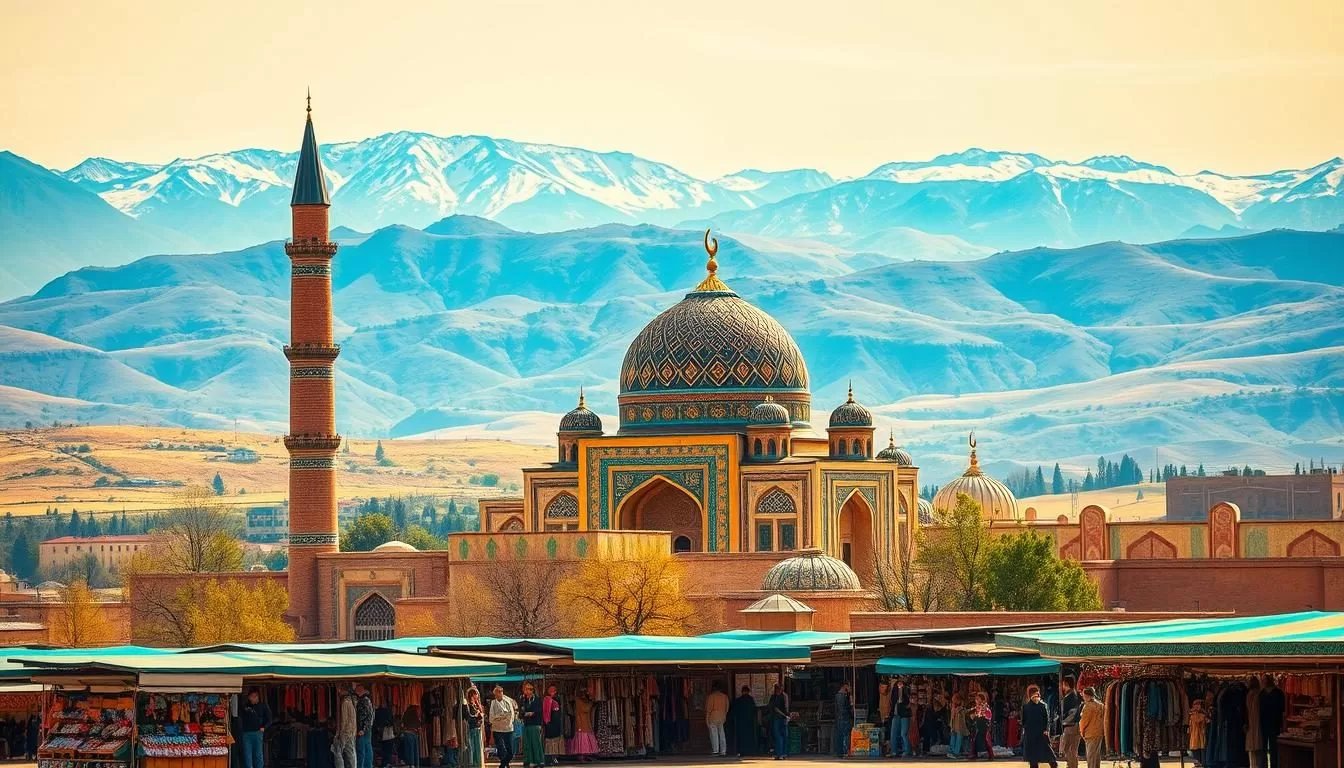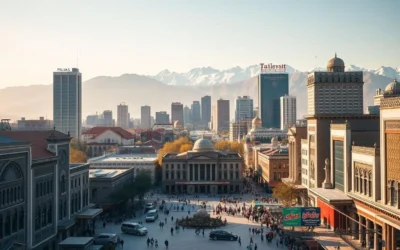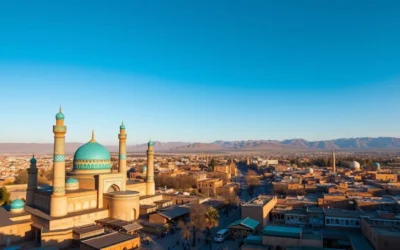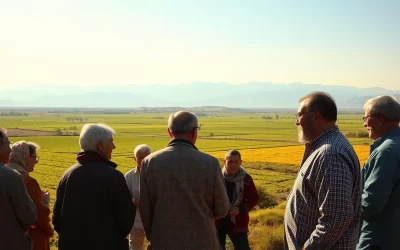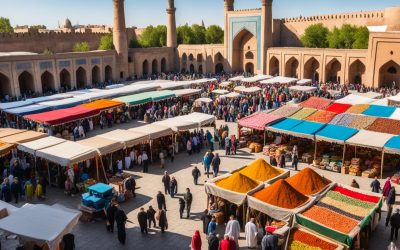Planning a trip to Uzbekistan requires careful consideration of the country’s extreme continental climate. The best time to visit is during spring (April to May) and autumn (September to early November), when temperatures are mild and dry.
During these periods, you can enjoy temperatures ranging from 70°F to 86°F in spring and 57°F to 86°F in autumn, making it ideal for exploring the country’s magnificent Silk Road cities and Islamic architecture. Understanding the local climate conditions will help you make the most of your trip and ensure a memorable experience.
As you plan your journey, you’ll want to know how time and temperatures impact your travel plans. By choosing the right time to visit, you can avoid the scorching summer heat and freezing winter temperatures, making your travel experience more enjoyable.
Discovering Uzbekistan’s Seasonal Charm
Discovering Uzbekistan’s seasonal charm is about understanding how its diverse geography and climate come together to create a unique travel experience. As you explore this ancient land, you’ll find that the country’s varied landscapes play a significant role in shaping its seasonal appeal.
Why Weather Matters When Visiting Central Asia
The weather in Uzbekistan significantly impacts the travel experience, as it does in much of Central Asia. Extreme temperatures can affect your comfort while exploring historical sites along the Silk Road. Understanding the local climate helps you prepare for your trip, ensuring you make the most of your time in this beautiful country. The weather influences not just your comfort but also the accessibility of certain regions, making it a crucial factor in planning.
Uzbekistan’s Unique Geographic Features
Uzbekistan’s geography is characterized by vast desert landscapes, rugged mountains, and fertile valleys, creating diverse microclimates across the country. The Kyzylkum Desert, for instance, contributes to extreme temperature variations in cities like Bukhara and Khiva. Meanwhile, the country’s positioning along the Silk Road has shaped the settlement patterns and historical sites you visit today. This varied geography means that elevation changes can result in significant temperature differences even within the same season.
Understanding Uzbekistan’s Climate Patterns
As you plan your trip to Uzbekistan, understanding the climate patterns is crucial for a memorable journey. The country’s diverse geography, which includes deserts, mountains, and valleys, contributes to its varied climate.
Continental Climate Characteristics
Uzbekistan experiences a continental climate, characterized by significant temperature fluctuations between summer and winter. The country’s landlocked position and distance from the moderating influence of the ocean result in temperatures that can soar in the summer and drop in the winter. This climate type is typical for the region, influencing the weather patterns in cities along the Silk Road, such as Samarkand and Bukhara.
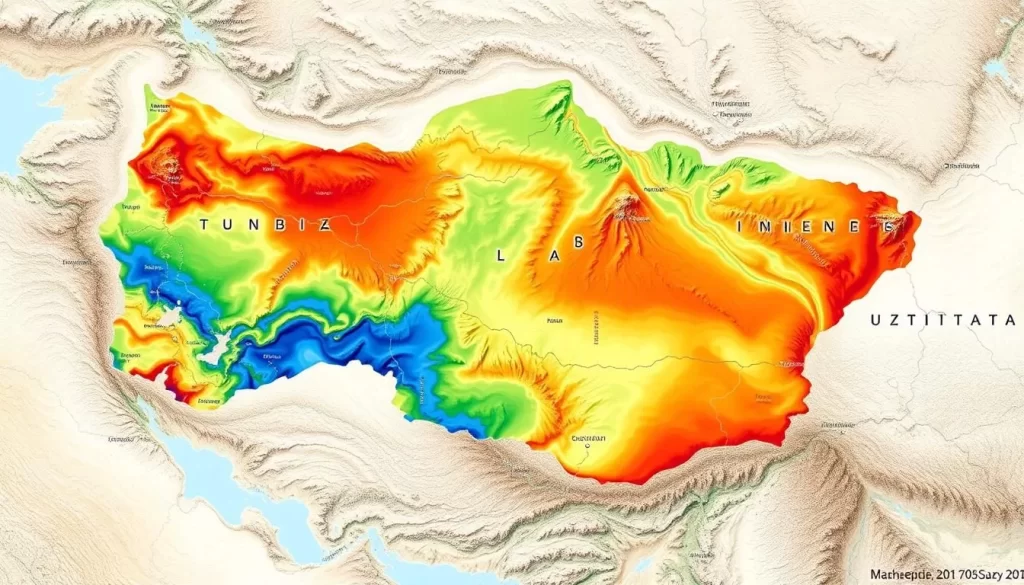
Regional Weather Variations
The climate varies significantly across different regions of Uzbekistan. The Fergana Valley, for instance, has a distinct microclimate that tends to receive more rain than other parts of the country. In contrast, southern regions like Termez are known for their milder winter temperatures, making them ideal for visiting historical sites, including ancient mosques. Understanding these regional variations can help you plan your itinerary more effectively.
Spring in Uzbekistan: A Blossoming Landscape
Uzbekistan’s spring season is a time of renewal, marked by blossoming landscapes and rich cultural festivities. As the country awakens from its winter slumber, the air is filled with the sweet scent of blooming flowers and the vibrant sounds of cultural celebrations.
March: Early Spring Awakening
March signals the beginning of spring in Uzbekistan, with the Navruz celebrations on the 21st marking the Iranian new year, a time of renewal and rebirth. It’s a period when locals and visitors alike can enjoy the early signs of spring.
April-May: Peak Spring Season
April and May are the peak months for spring in Uzbekistan. The landscapes are in full bloom, and the weather is mild and pleasant, making it an ideal time to explore the country’s natural beauty and cultural heritage.
Spring Festivals and Cultural Events
Spring in Uzbekistan is also a time for vibrant cultural festivals. The Boysun Bahori folklore festival in the Surkhandarya Province showcases ancient traditions, while the Silk and Spices Festival celebrates the country’s historical role in the Silk Road trade, highlighting its rich culture.
| Month | Event | Description |
|---|---|---|
| March | Navruz | Iranian new year celebration marking renewal and rebirth |
| April-May | Boysun Bahori | Folklore festival preserving ancient traditions |
| May | Silk and Spices Festival | Celebration of Uzbekistan’s role in the Silk Road trade |
Summer Heat: Navigating June to August
June marks the beginning of summer in Uzbekistan, a time of warm weather and bustling tourist sites. As you plan your trip, it’s essential to understand the climate variations across the country.
Temperature Extremes in Desert Regions
The desert regions of Uzbekistan experience extreme temperatures during the summer days, often reaching highs above 40°C (104°F). You should be prepared for the heat if you plan to visit these areas.
Tips for Summer Travelers
To make the most of your summer trip, stay hydrated and plan your activities during the cooler morning or evening time. Visiting historic towns like Bukhara and Khiva can be particularly enjoyable during this period.
Summer Cultural Highlights
Despite the heat, summer in Uzbekistan is a great time to experience the local culture. The Namangan Flower Festival, held in June, is a vibrant celebration of the region’s horticultural traditions. You can also enjoy outdoor dining, music, and social gatherings in the evenings, making the most of your summer days in these charming towns.
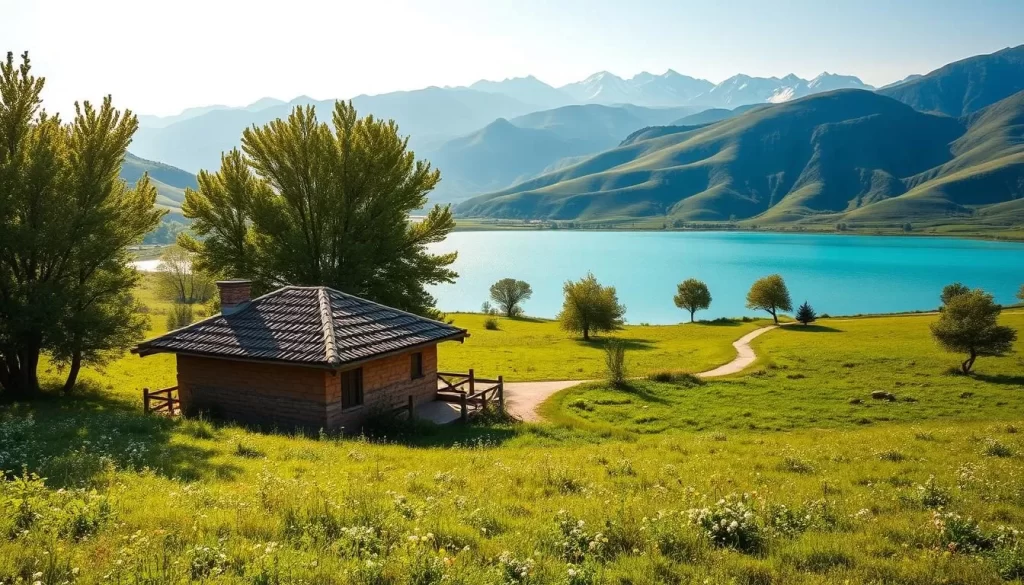
Uzbekistan: Best Months for a Weather-Savvy Trip
The arrival of fall in Uzbekistan marks the beginning of a wonderful time to visit, with comfortable temperatures and vibrant markets. As the summer heat dissipates, the country transforms into a traveler’s paradise.
September-October: The Golden Season
September and October are considered the best months to visit Uzbekistan. The weather is mild, making it ideal for sightseeing along the Silk Road. The harvest season is in full swing, and markets are filled with fresh produce, offering a glimpse into the local culture.
Why Autumn Offers the Perfect Balance
Autumn in Uzbekistan offers a perfect balance of comfortable temperatures, clear skies, and manageable tourist numbers. The quality of light during this season makes it a photographer’s dream, capturing the country’s architecture in the best possible way.
| Month | Average Temperature | Tourist Season |
|---|---|---|
| September | 22°C (72°F) | Moderate |
| October | 18°C (64°F) | Moderate |
With mild days and cool evenings, autumn allows for full days of comfortable exploration. The post-summer calm creates more authentic interactions with locals and less crowded experiences at major sites.
Winter Adventures: November to February
Winter in Uzbekistan brings a tranquil ambiance, with clear skies and fewer tourists. This is an ideal time for those who prefer fewer crowds and are prepared for the cold.
Cold Weather Benefits: Clear Skies and Few Tourists
January is one of the coldest months in Uzbekistan; however, the skies are bright and clear. With far fewer visitors, you’re likely to have various sites to yourself – it can be a magical time to visit. Make sure to pack plenty of warm clothing and layers, particularly if visiting Samarkand and Tashkent.
Winter Photography Opportunities
The crisp, clear air and brilliant blue skies create exceptional conditions for photography enthusiasts. The low winter sun casts dramatic lighting effects on Uzbekistan’s intricate Islamic architecture. Occasional light snowfall can transform historic sites into magical winter wonderlands. You can capture unique moments by leveraging the contrast between warm interior lighting and cool exterior conditions.
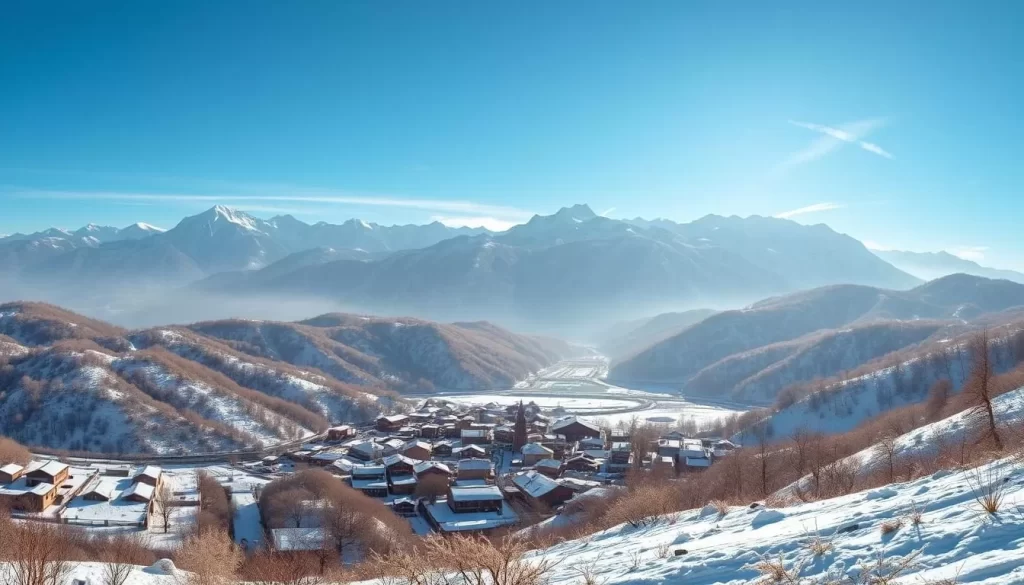
| Photography Tips | Benefits | Locations |
|---|---|---|
| Capture during golden hour | Dramatic lighting effects | Samarkand, Tashkent |
| Utilize clear skies | Exceptional sky photography | Bukhara, Khiva |
| Leverage snowfall | Magical winter landscapes | Historic sites across Uzbekistan |
Regional Weather Guide: Where to Go When
Regional weather conditions play a significant role in determining the best times to visit different parts of Uzbekistan. The country’s diverse geography, ranging from deserts to mountainous valleys, results in varied climate conditions across regions.
Tashkent and Samarkand Weather Patterns
Tashkent and Samarkand experience a continental climate with significant temperature fluctuations between summer and winter. Visitor numbers peak in spring and autumn when the weather is mild. Tashkent’s weather is slightly colder than Samarkand’s due to its higher latitude.
Bukhara and Khiva Climate Considerations
Bukhara and Khiva, located in the desert region, are known for their extreme temperature variations. These cities are best visited during spring or autumn to avoid the harsh summer heat and cold winters. The dry desert climate means there’s little rain throughout the year.
The Fergana Valley’s Microclimate
The Fergana Valley has a unique microclimate due to its enclosed geography, resulting in more rain and slightly milder temperatures compared to other regions. This fertile valley is agriculturally rich and famous for its fruit harvests, making it a great destination during Uzbekistan days in spring and summer.
| Region | Best Time to Visit | Weather Characteristics |
|---|---|---|
| Tashkent & Samarkand | Spring, Autumn | Mild temperatures, fewer visitors in autumn |
| Bukhara & Khiva | Spring, Autumn | Extreme temperatures, dry desert climate |
| Fergana Valley | Spring, Summer | Milder temperatures, more rainfall, fertile agricultural land |
Festivals and Events: Planning Around Cultural Celebrations
Experience the best of Uzbekistan’s culture by planning your trip around its most significant celebrations. The country hosts various festivals throughout the year, showcasing its rich heritage and traditions.
Spring Celebrations: Navruz and Boysun Bahori
Spring in Uzbekistan is marked by vibrant festivals like Navruz and Boysun Bahori. Navruz, celebrating the Persian New Year, is a significant cultural event that symbolizes renewal and hope. Boysun Bahori, on the other hand, is a traditional festival that highlights the region’s folklore and cultural practices.
Summer Events: Namangan Flower Festival
Summer brings the Namangan Flower Festival, a colorful celebration of Uzbekistan’s floral beauty. The festival is a treat for visitors, with its picturesque landscapes and vibrant floral displays.
Fall Festivities: Silk and Spices Festival
Autumn is the time for the Silk and Spices Festival, a celebration of Uzbekistan’s historical role in the ancient Silk Road trade network. You can witness traditional crafts demonstrations, including silk weaving and ceramic making, which showcase the country’s living cultural heritage. The festival also coincides with the Sharq Taronalari music festival, which brings Central Asian musical traditions to magnificent historical venues like Samarkand’s Registan Square.
| Festival | Season | Highlights |
|---|---|---|
| Navruz | Spring | Persian New Year celebrations, cultural events |
| Boysun Bahori | Spring | Folklore, traditional practices |
| Namangan Flower Festival | Summer | Floral displays, colorful celebrations |
| Silk and Spices Festival | Autumn | Traditional crafts, cultural heritage, silk spices |
| Sharq Taronalari | Autumn | Central Asian music, historical venues |
By attending these festivals, you can gain a deeper understanding of Uzbekistan’s culture and traditions. The festivals offer opportunities to purchase authentic handicrafts directly from master artisans, allowing you to take a piece of Uzbekistan’s heritage back home.
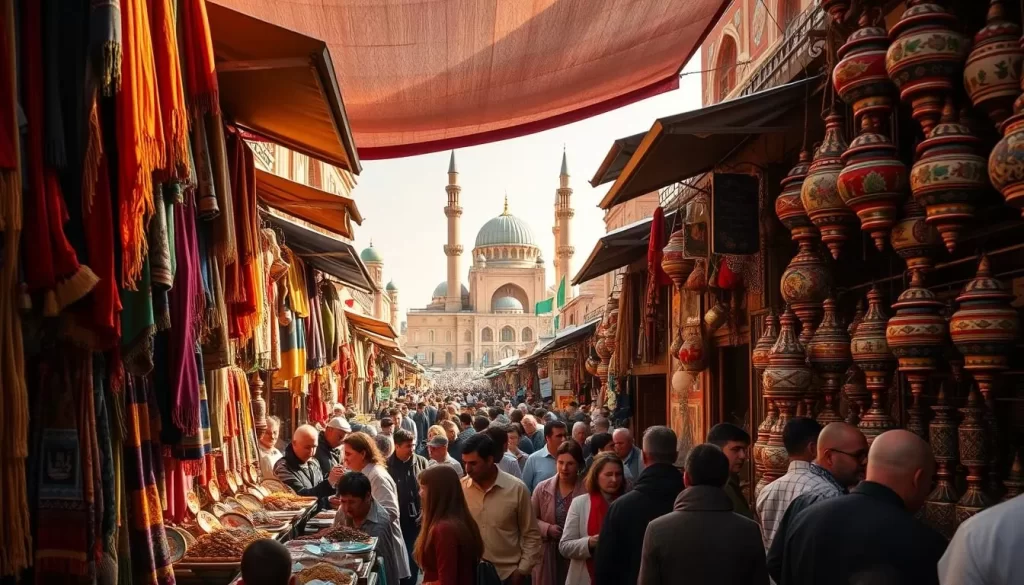
Practical Weather-Based Travel Tips
When planning your trip to Uzbekistan, understanding the practical aspects of weather-based travel is crucial. The country’s diverse climate means that preparation is key to a successful journey.
Packing Essentials for Each Season
Packing the right clothing for your visit to Uzbekistan depends on the time of year you plan to travel. For desert treks, consider March-May or September-October for favorable conditions.
- Spring: Lightweight clothing, comfortable shoes for walking.
- Summer: Loose, breathable clothing, sun protection.
- Autumn: Layers for cooler mornings and evenings.
- Winter: Warm clothing, including a heavy coat and gloves.
Transportation Considerations by Season
Understanding how seasonal weather affects transportation in Uzbekistan is vital. For instance, some mountain passes may become impassable during winter, affecting travel between regions.
| Season | Transportation Challenges | Best Options |
|---|---|---|
| Spring | Occasional rain, potential flooding | Trains, buses |
| Summer | Extreme heat | Air-conditioned buses, domestic flights |
| Autumn | Mild weather, occasional rain | Trains, buses, private vehicles |
| Winter | Impasseable mountain passes, cold | Domestic flights, well-maintained roads |
Conclusion: Crafting Your Perfect Uzbekistan Itinerary
Crafting your perfect Uzbekistan itinerary involves balancing weather, cultural events, and regional accessibility. The best time to visit Uzbekistan is during spring (April to May) and autumn (September to early November), when temperatures are mild and dry.
By understanding the seasonal variations and cultural celebrations like the Silk and Spices Festival, you can plan a trip that suits your preferences. Whether you’re interested in desert trekking, visiting historic sites, or exploring vibrant markets, this guide helps you make the most of your Uzbekistan days.
The above is subject to change.
Check back often to TRAVEL.COM for the latest travel tips and deals.
Here are some Tours & Sightseeing suggestions that might pique your interests!
